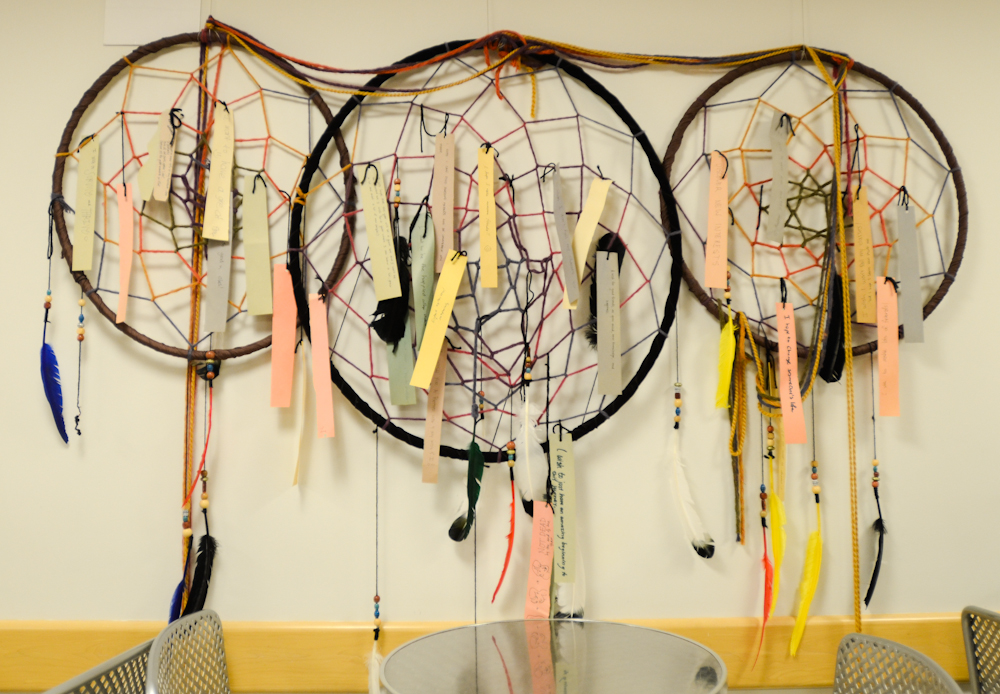
Coordinators for the Your Art Here program—an initiative to showcase student art and allow students to curate art spaces around campus—are addressing personnel concerns this year in an effort to revitalize the project.
Through the program, originally launched in Fall 2010, student artists have the chance to share their work with the Stanford community in six student art spaces, ranging from the walls of eateries like Cool Café at the Cantor Arts Center, the CoHo and Lakeside Dining to traditional galleries at Wallenberg Hall, Old Union and the newly added gallery at the Hume Center for Writing and Speaking.
Paula Salazar ‘13, the Arts in Student Life Coordinator for the Stanford Arts Institute who is overseeing the program’s rejuvenation, said there was a drop off in participation towards the end of last year due to excessive hours demanded of students as the program grew in popularity.
“The time commitment became very intensive for students,” Salazar said, “but we recognized that and that’s why we are re-launching it to see what would work best with students’ lifestyle and schedule and needs.”
This year, the program is dividing gallery management from a single curator position to a close-knit team consisting of two curators, an exhibitions manager and a publicity agent for each location.
Your Art Here’s six gallery locations accept submissions from any Stanford student, regardless of whether they are involved in an arts class on campus. Student curators, who are trained in museum management tasks through the program, then select pieces to develop and publicize exhibitions.
Shanae Davis ‘14 was attracted to the program last year after she had studied abroad in Oxford during her sophomore year, where she worked at the Pitt Rivers Museum at the University of Oxford.
“I found that just because you have art and you put it somewhere, that doesn’t make it an exhibition space,” Davis said.
She added that the Your Art Here program gave her a chance to work directly with artists and express their vision through her displays, while also giving her practical experience in coordinating with dozens of people and drafting schedules for the various phases of exhibitions.
Davis hopes to either pursue further education in museum studies or work in public relations for a museum.
“My dream job after 10 or 20 years of experience would be to be one of the first black, female museum directors,” Davis said.
Though the hands-on experience with the galleries is given to those involved with curatorial roles, the program expands access to the arts for all students, in line with the campus-wide effort to increase and improve the University’s art programs and facilities, Salazar said.
“Just going to class and seeing something on your way is really important to demystifying the art world and integrating it holistically into your daily Stanford life,” Salazar said.
Tess Dufrechou ‘16, who exhibited her art in the program last year, said hearing fellow students, most of whom were not artists, acknowledge her art was exciting.
In the coming years, Dufrechou hopes that these galleries will expand to play a larger role in uniting the arts community. She said she sees displaying art publicly as a chance for artists and non-artists to see what other students are doing, offering an campus unity vital to Stanford’s collaborative culture.
“I think we can really work on getting artists to talk to each other more,” Dufrechou said. “It would be nice to talk to people who have design skills or something different than my skills and see how they’re doing their art.”
Salazar said the program applications for serving on the Your Art Here committee are still being accepted.
Contact Alex Zivkovic at aleksa ‘at’ stanford.edu.
